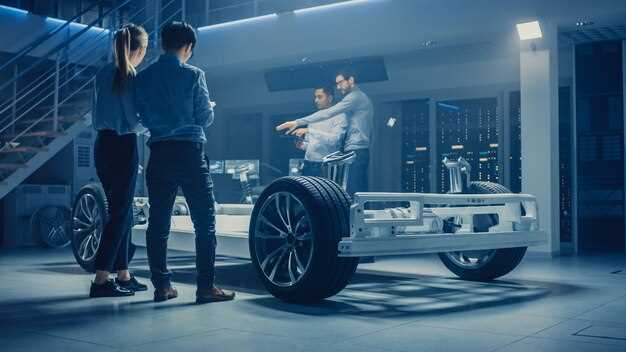
Choosing the right car base is a critical step in ensuring the success of your racing project. The car base serves as the foundation for your entire build, influencing not only the performance but also the overall handling and reliability of the vehicle. Understanding the various factors that play into this decision will arm you with the knowledge needed to make an informed choice.
When selecting a car base, consider your project goals and budget. Different models offer distinct advantages, whether you seek speed, agility, or durability. Performance-oriented platforms, such as those derived from sports cars, may provide a competitive edge, while others may be better suited for durability in rally racing or other rigorous conditions. Assess how you envision your project evolving and match it with the appropriate car base that aligns with those aspirations.
Additionally, the availability of aftermarket support and parts should not be overlooked. A well-supported car base allows for easier upgrades and modifications, enhancing performance as your racing project develops. By analyzing these key aspects, you will be better equipped to select the optimal foundation that aligns with your racing ambitions and project requirements.
Identify Key Performance Attributes of Your Desired Racing Discipline

When embarking on a racing project, pinpointing the essential performance attributes of your targeted discipline is crucial. Each racing model, whether it be for circuit racing, drag racing, or rally, demands specific characteristics that influence its competitive edge.
For circuit racing, agility and cornering capability are paramount. This includes a low center of gravity, precision braking, and robust suspension systems to handle sharp turns. Aerodynamics also plays a significant role, with streamlined designs that reduce drag and increase downforce, allowing higher speeds on straights and stability in corners.
In drag racing, acceleration is the primary focus. The ideal car model should emphasize powerful engine output, lightweight design, and effective traction systems. The ability to launch quickly off the line is critical, often requiring specialized tires and gearing to optimize performance over a short distance.
Rally racing necessitates a versatile approach, as vehicles encounter diverse terrains. Key attributes include a strong suspension system to absorb shocks, all-wheel drive for improved traction, and a durable chassis to withstand rough conditions. The ability to adapt quickly to different surfaces, such as gravel or asphalt, is vital for success in this discipline.
Understanding these specific performance metrics related to your racing discipline will facilitate informed decisions when selecting a car base for your project. The right model will not only enhance your chances of success but also ensure that the vehicle meets the unique challenges posed by the chosen racing environment.
Evaluate Compatibility of Base Models with Aftermarket Modifications

When selecting a base model for your racing project, it’s crucial to assess how compatible the car is with various aftermarket modifications. This involves determining not only what upgrades can be installed but also how they affect the performance and reliability of the vehicle.
Start by researching the specific model of the car you are considering. Some base models are more widely supported in the aftermarket community, meaning you will find numerous options for performance parts and upgrades. A popular model may have a wealth of performance parts available, including engine enhancements, suspension kits, and aerodynamic components.
Next, evaluate how certain modifications influence the overall dynamics of the car. Not all parts work seamlessly with every base model. For instance, upgrading the engine may require additional changes to the transmission or drivetrain components to maintain optimal performance. Additionally, modifications like turbocharging or supercharging require careful consideration of the car’s existing infrastructure to handle increased power.
Compatibility extends to the nature of the modifications themselves. Some aftermarket parts are designed for specific applications and may not be suitable for all base models. It’s essential to understand the specifications and limitations of each part, as well as how they integrate with the car’s original design.
Consider the long-term implications of your modifications. While certain parts might offer significant power increases, it’s essential to ensure that the base model can handle those changes without compromising reliability. Research common issues that may arise from extensive modifications, as this can inform your decision on what base model to choose.
Lastly, connect with the racing community to gain insights and recommendations on the best aftermarket products for your specific base model. Engaging with forums, attending car shows, or joining local car clubs can provide valuable first-hand experience from other enthusiasts who have customized similar cars.
Assess Budget Considerations for Base Model Acquisition and Upgrades
When embarking on a racing project, one of the first steps involves selecting the right car base. This decision is heavily influenced by budget considerations, making it essential to analyze costs associated with both the acquisition and potential upgrades of the base model.
Initial Acquisition Costs: The first element of your budget is the purchase price of the car base. Prices can vary significantly depending on factors such as make, model, year, and condition. Researching different car bases and attending auctions or sales can help you find the best deal. Additionally, consider whether to buy new or used; a slightly older model may offer a desirable balance between price and performance.
Upgrade Expenses: Once you acquire your car base, the next step is planning for necessary upgrades. These can include performance enhancements such as engine modifications, suspension adjustments, and tire upgrades. Understanding that each upgrade will contribute to the overall racing performance is crucial. It’s advisable to outline a detailed list of desired upgrades and their estimated costs to avoid overspending.
Maintenance and Running Costs: Don’t overlook ongoing costs after acquiring your car base. Regular maintenance, parts replacement, and potential tuning sessions can add up quickly. Ensuring that your budget accounts for these expenses will help keep your racing project sustainable without jeopardizing performance.
Contingency Fund: It’s wise to set aside a contingency fund within your budget to handle unexpected repairs or additional modifications that may arise during your project. This can provide peace of mind and prevent delays in your racing schedule.
Ultimately, careful consideration of all these budget factors can significantly influence the success of your racing project. Prioritizing expenses based on performance requirements will ensure that you select a car base that not only meets your racing goals but also aligns with your financial capabilities.



